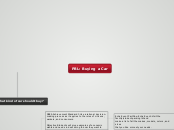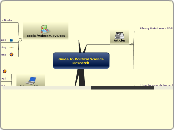PBL: Buying a Car
What kind of car should I buy?
Day Five: Presentations
Assessment: Project Rubric
ALA: AASL Standards for the 21st Century Learner
ALA: K-12 - Knowledge Application: Learners use skills, resources and tools to draw conclusions, make informed decisions, apply knowledge to new situations, and create new knowledge. 2.1.6 Use the writing process, media and visual literacy, and technology skills to create products that express new understandings.
Day Four: Finishing Up!
Assessment: Using the final project rubric, students create a flyer or brochure that describes their chosen process with details of how they used it to come to the decision of what car to buy. Students will upload their product before the beginning of next class to the class Google folder for presentations.
Day Three: How much will all of this cost?
Additional Questions
(1) How will I pay for the car I decide to buy?
(2) What’s the difference between buying a new and used car?(3) What is a car lease and is that the same thing as buying a car?(4)What are some advantages and disadvantages of buying a car from a dealership?
(5)What are some advantages and disadvantages of buying a used car from an individual? (6) How do I know if the price I am being charged is fair?
Assessment: Homework using Google Survey
about how one finances/affords a car.
NBEA Achievement Standard VII:Analyze choices available to consumers for protection against risk and loss.
Objectives:
(1) Students will identify the insurance necessary to own and drive a car in Kentucky.
(2) Students will identify various providers of insurance.
NBEA Achievement Standard VII: Analyze factors that affect the choice of credit and the legal aspects of using credit.
Objectives:
(1) Students will identify the criteria for a car loan and explain how their credit affects how much they will pay for their car.
(2) Students will research consumer borrowing.
(3) Students will compare various types of car loans and lenders.
Day Two: The Search Begins
Additional Questions: (1) What types of decision-making processes exist to help me with this choice? (2)Where can I find information about the reliability of different types of cars? (3) How do I find out if a vehicle meets these needs? (4)What will it cost to actually own this car and drive it regularly?
Assessment: Verbal and observational through individual discussion with teacher.
ALA: AASL Standards for the 21st Century Learner
ALA: K-12 - Critical Thinking: Learners use skills, resources and tools to inquire, think critically, and gain knowledge.
1.1.9 Collaborate with others to broaden and deepen understanding.
Students will share their interviews with a partner and discuss what they discovered.
Large Group Sharing: What were some of the decision-making processes found and chosen. Students may switch if they find one they like better.
NBEA Achievement Standard I: Use a rational decision-making process as it applies to the roles of citizens, workers, and consumers.
Objectives:Students will recognize and assume responsibility for the consequences of economic choices through comparing and contrasting the costs of different vehicles.
Students begin using their wants and needs, information from their interviews and the process they have chosen to find three cars that they are interested in purchasing.
Day One: Introduction and Research
ALA: AASL Standards for the 21st Century Learner
ALA: K-12 - Critical Thinking: Learners use skills, resources and tools to inquire, think critically, and gain knowledge.
1.1.3 Develop and refine a range of questions to frame the search for new understanding.
Additional Questions:
(1) What are some of my wants in a car? (2) What are my actual needs in a vehicle? (3) What makes a car reliable?
Distribute rubric for final product
Assessment: Homework (Research) - Interview a parent or another adult about their car buying experience.
KY Vocational Studies, High School, Financial Literacy standard 5.5: Students use a decision-making process to make informed decisions among options.
Objectives:
Students will choose and apply a rational Decision-making process to personal buying decisions.
Large group brainstorming of what wants, needs, and other criteria their parents or another adult probably used in purchasing their vehicle.
NBEA Achievement Standard I: Use a rational decision-making process as it applies to the roles of citizens, workers, and consumers.
Objective:Students will give examples of economic wants and needs in describing the car they want to buy.
Entry Event Part One: Entry Event: Visit the faculty/student parking lot and
make a list of all the makes, models, colors, and sizes
that you like or meet your needs.









